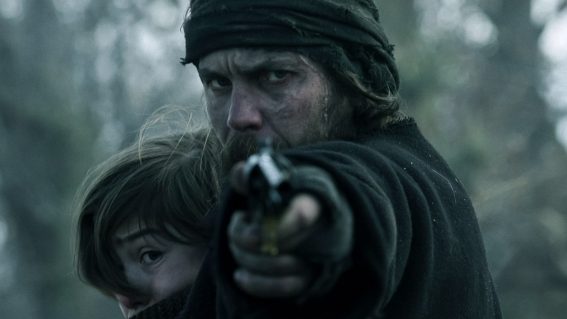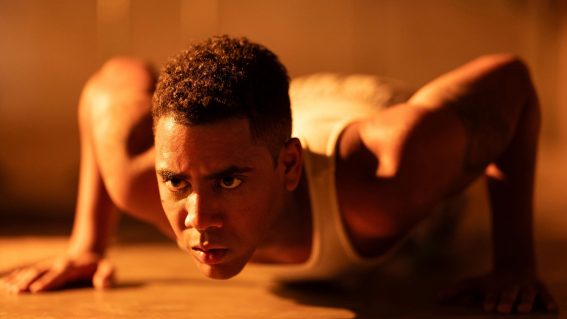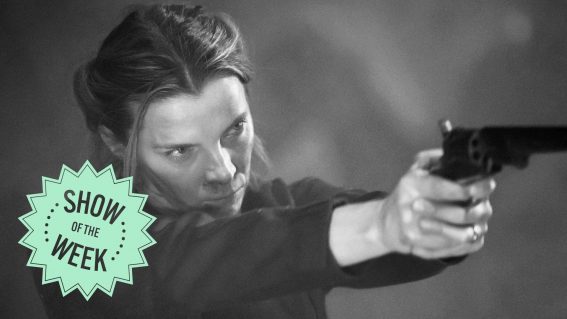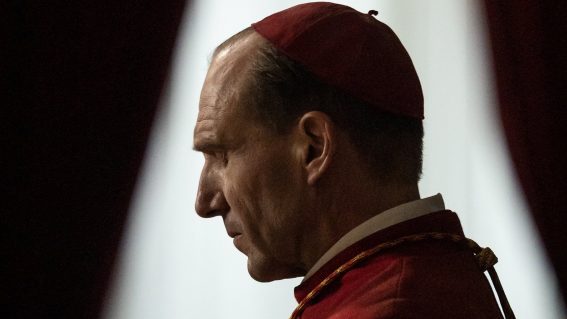True crime series Welcome to Chippendales enters fascinating psychological territory

We’re all drowning in content—so it’s time to highlight the best. In her column, published every Friday, critic Clarisse Loughrey recommends a new show to watch. This week: the true crime, male strip club-centered miniseries Welcome to Chippendales.
As queasy a relationship as the true crime genre may have with concepts like empathy and respect, I think it’s somewhat counterproductive to admonish our society for its fascination with it. We possess a deep, psychic drive towards the darkness. We need to know our fears before we can control them. We need to find ourselves within those familiar impulses—the pettiness, the jealousy, the anger—before we can begin to imagine that tipping point into inhumanity. That’s the most frightening thing about murderers and abusers: they’re the incomprehensible part of our ordinary world.
It’s that compulsive desire for understanding that pushes the recent Welcome to Chippendales, an eight episode miniseries on Disney+, into fascinating psychological territory. Most of this is intentional. Some of it, I think, is a by-product of its subject: the chintzy, illusionary wholesomeness projected by the Chippendales, the famous male striptease institution that preceded both The Full Monty and Channing Tatum’s Magic Mike universe. Adapted from the book Deadly Dance: The Chippendales Murders, it tracks the dramatic rise-and-fall narrative of the club’s founder, Indian entrepreneur Somen “Steve” Banerjee (played by Kumail Nanjiani).
In 1975, Banerjee bought up a ramshackle West LA club, transformed it into a hub of pleasure for a new generation of sexually empowered, financially independent women, and went on to birth an empire. But a good portion of the Chippendales’s success, arguably, could be credited to Banerjee’s business partner and lead choreographer Nick De Noia (Murray Bartlett, whose roles in The White Lotus and The Last of Us have really put the actor at the epicentre of good television). Banerjee and De Noia frequently clashed. That’s where the true crime aspect starts to kick in.
At its heart, Welcome to Chippendales is about a man—Banerjee as the self-titled “outsider, underdog, immigrant”—who crumbles at the foot of the American Dream. Created by Robert Siegel, also behind the thematically similar Pam & Tommy, it’s a series of constant, escalating compromises. First, Somen changes his name to Steve. Then he starts to exploit his workers. Then, logically, comes the arson.

The show is noticeably disjointed in places. This seems to be the perpetual curse of our current obsession with the prestige miniseries—too many stories with more than enough material to last for three or four seasons being crammed into eight or nine episodes. But the ideas are there: there’s a storyline about Otis (Quentin Plair), the one Black Chippendales dancer, who’s openly fetishised by the white clientele but can’t be included on their yearly calendar because, as Banerjee insists, those desires are still too subversive to be acknowledged anywhere beyond the club’s front doors. De Noia’s frustrations lie partly in the fact that, despite his own bisexuality, the Chippendales deliberately exclude any kind of queer audience. This place is supposedly being marketed as a beacon of personal freedom. But to who, exactly?
There’s a complex and sometimes contradictory ideology behind the Chippendales—and male strippers in general, which explains the wild tonal change between the first and second Magic Mike movies. Labour is labour, and capitalism is capitalism, no matter how wrapped up it is in elaborately staged fantasy. And the real challenge is finding any room for all that fearsome emotion in between the rows of gyrating hips oiled up underneath cowboy chaps, the montages cut to Kenny Loggins’s Footloose, and the piles of cocaine.
Welcome to Chippendales doesn’t quite hit as it could have done, but I was struck by how much of the true story salaciousness here was carefully tidied behind the perpetual tragedy of personal delusion. It’s less a traditional descent into villainy and moral depravity, and more the frenzied actions of individuals who feel like they’re trapped in a tank with about five minutes of oxygen left. There’s no karmic retribution. No justice. All we’re eventually left with is the sad and empty feeling of lives lost to meaningless causes.
Everybody here, inevitably, is projecting some kind of image of success onto themselves. There’s Paul Snider (Dan Stevens), the nightclub promoter whose need to hold onto a certain lifestyle—one that includes dating Playboy playmate Dorothy Stratten (Nicola Peltz)—which leads him down a dark and infamous path. There’s Denise Coughlan (Juliette Lewis, who delivers the line “why so beige?” very memorably). She’s a fictional, composite figure credited with inventing the tearaway pant, who only lands the job of Chippendales costume designer by pre-writing her own myth. One of the most poignant figures on the show, Banerjee’s wife Irene (Annaleigh Ashford), is torn between her humble accountant origins, her love for her husband, and the unshakeable image of how the rich and corrupt should act. Maybe somewhere, in all that mess, we can find a scrap of our own desperation.

















